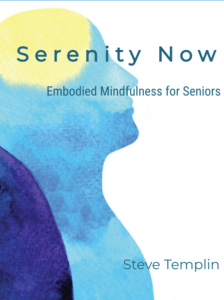One of the biggest challenges of being a highly sensitive person is the nervous system’s reaction, or potential overreaction to threat, real or imagined.
Threat throws the autonomic nervous system (ANS) into a protective mode, where we’re driven to run, fight, freeze, or just do our best to disappear. These reactions can become an ingrained response to stress or trauma and potentially last a lifetime.
These defensive autonomic nervous system reactions are now understood to contribute significantly to both chronic emotional and physical illness.
Fortunately for the HSP, their sensitivity, creativity, and subtle awareness are strengths when it comes to inviting the ANS to rebalance itself … which it knows how to do if given the right conditions.
The crucial element for resetting the ANS is safety. Safety is the magic elixir for soothing and rebalancing the ANS and supporting both our emotional and physical health.
I think the most important question facing humanity is, ‘Is the universe a friendly place? ‘
Albert Einstein
Einstein shared this insight fifty years prior to the discovery of the Polyvagal Theory by Stephen Porges, Ph.D. The theory’s essence is that safety and friendly engagement with others or ourselves, puts a brake on the protective neurological defenses that are responsible for so much human suffering. Einstein, not just good at math.
Safety becomes a powerful therapeutic agent from both a top-down and bottom-up perspective. If you know in your intellect (top-down) that safety is neurologically therapeutic that’s very empowering because it puts a lot of healing potential into your own hands.
And then if you employ body-oriented self-regulation practices (bottom-up) that signal safety to the brain and ANS you’ve hit the daily double.
Let’s Practice Sending Safety Signals to the Brain
When you breathe out longer than you breathe in you’re activating the parasympathetic side of the nervous system, via the vagus nerve. That neurological shift puts a brake on the sympathetic or stress side of the system and can offer a soothing experience. That soothing can be experienced and appreciated. Practiced over time it leads to more vagus and less sympathetic arousal. More soothing. More healing.
There are a number of time-tested ways to breathe out longer. You can play a wind instrument like the clarinet as I did. It was good for my breathing but not much else. The truth is I wasn’t very good. The clarinet is a fine instrument.
You can chant. Chanting has been around a very long time. Here’s a simple, non-sectarian version. On the in-breath silently think the sound P-E-P (as in I want more ‘pep’) for three or four seconds. Then, on the out-breath actually sound out the sound S-E-E-E-E for a slightly longer duration. Now you’re activating your vagus nerve. Feel free to repeat this process over a few cycles of in and out breaths. Keep the process comfortable. It can be refreshing.
Touch is another way to trigger an experience of safety. You can always fold your arms across your chest and give yourself a gentle hug while you’re breathing slowly. While you’re gently hugging yourself you could also take a nice breath in and let out a sigh.
These are subtle ways to powerfully shift your neurology. A lot of us are not comfortable with trusting the subtle wisdom of the body. We tend to push, to effort, to fix, rather than to just nudge and trust in the body’s wisdom.
This impulse to control is a reflection of the sympathetic nervous system’s dominance, not only in our personal lives but in our culture as well, and can take some practice to soften. Experiment with subtle interventions like gentle hugging or slower breathing while being patient with yourself and learning to trust more.


 Steve is a retired Doctor of Oriental Medicine, Acupuncture Physician, and HeartMath Trauma-Sensitive Certified Practitioner with over 35 years of clinical experience in the fields of Energy Medicine, Energy Psychology, and Biofeedback.
Steve is a retired Doctor of Oriental Medicine, Acupuncture Physician, and HeartMath Trauma-Sensitive Certified Practitioner with over 35 years of clinical experience in the fields of Energy Medicine, Energy Psychology, and Biofeedback. 